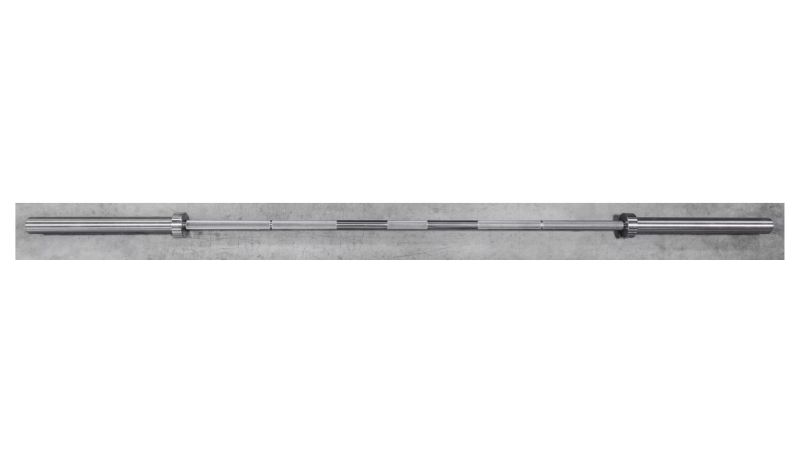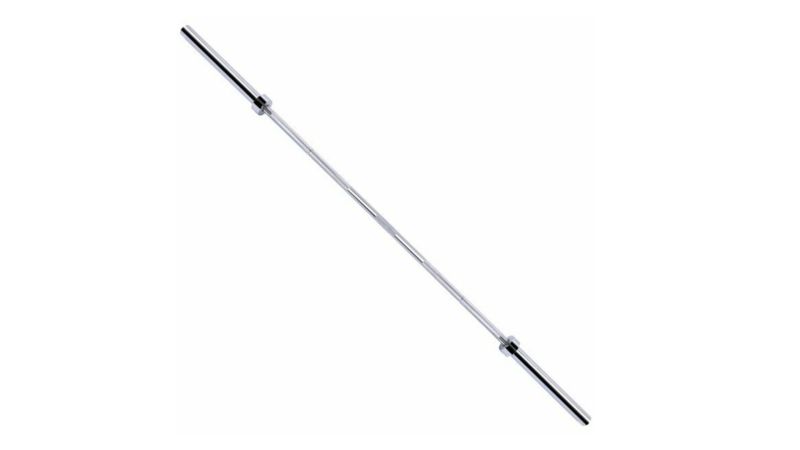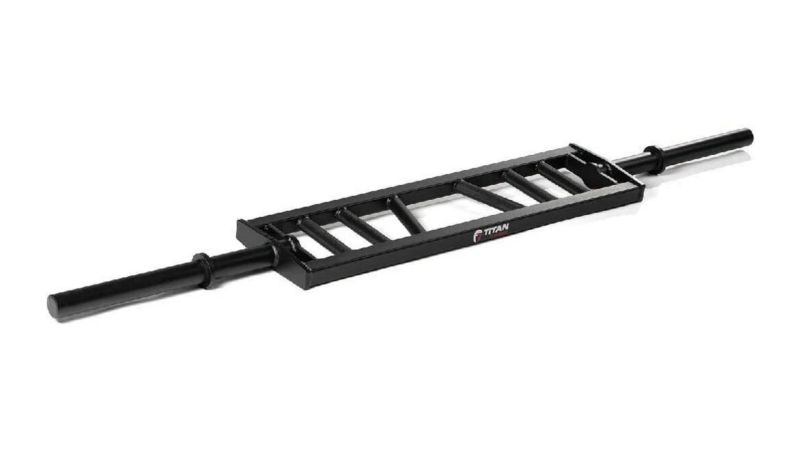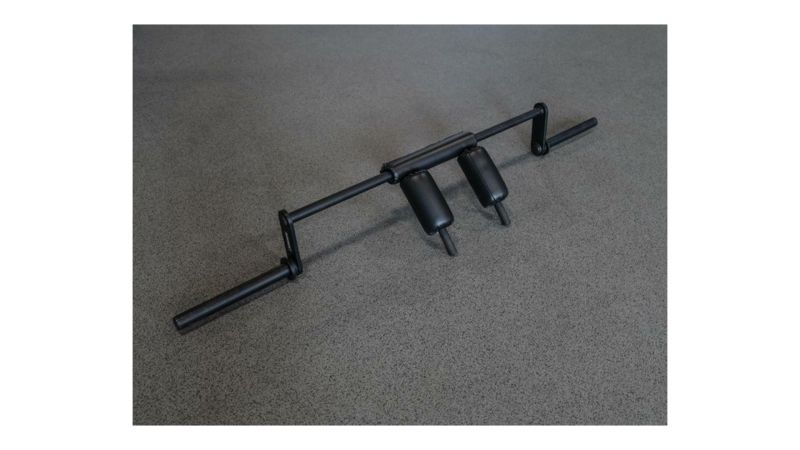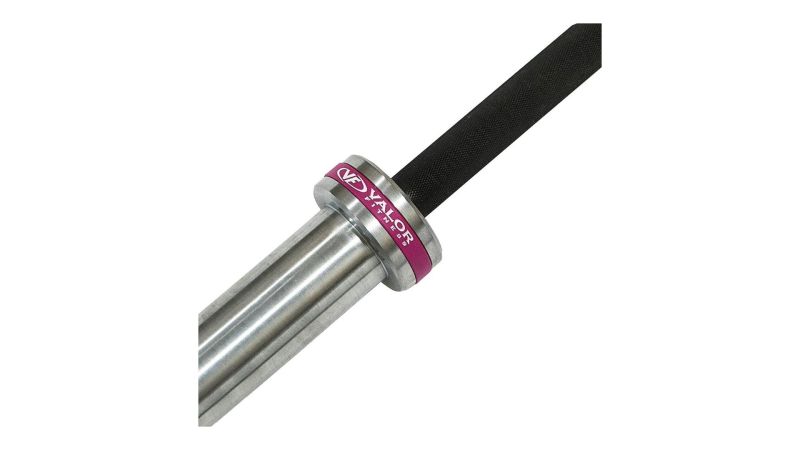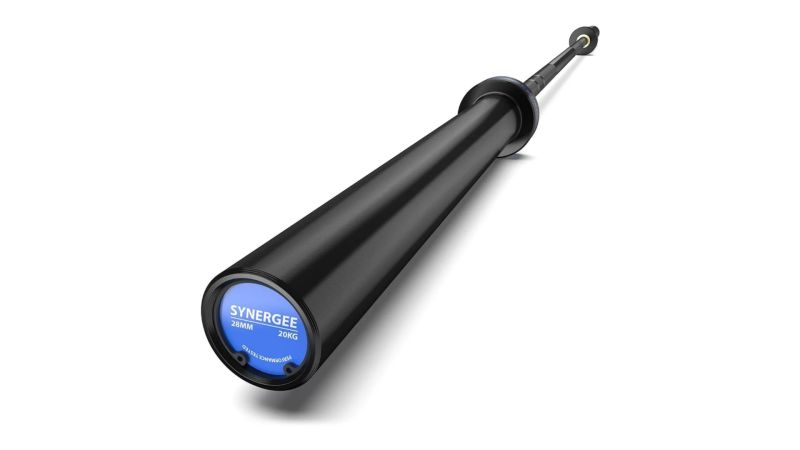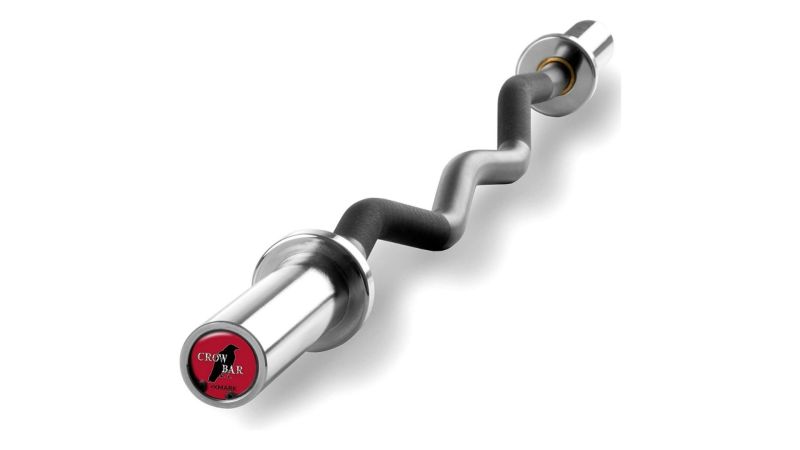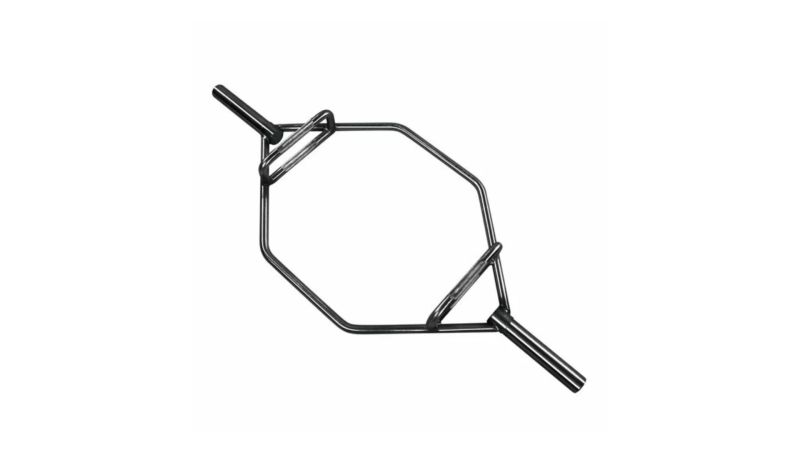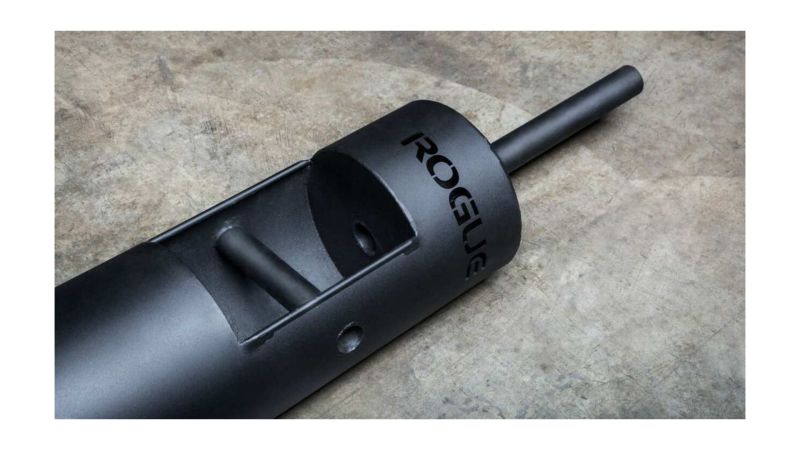We may earn revenue from the products available on this page and participate in affiliate programs.
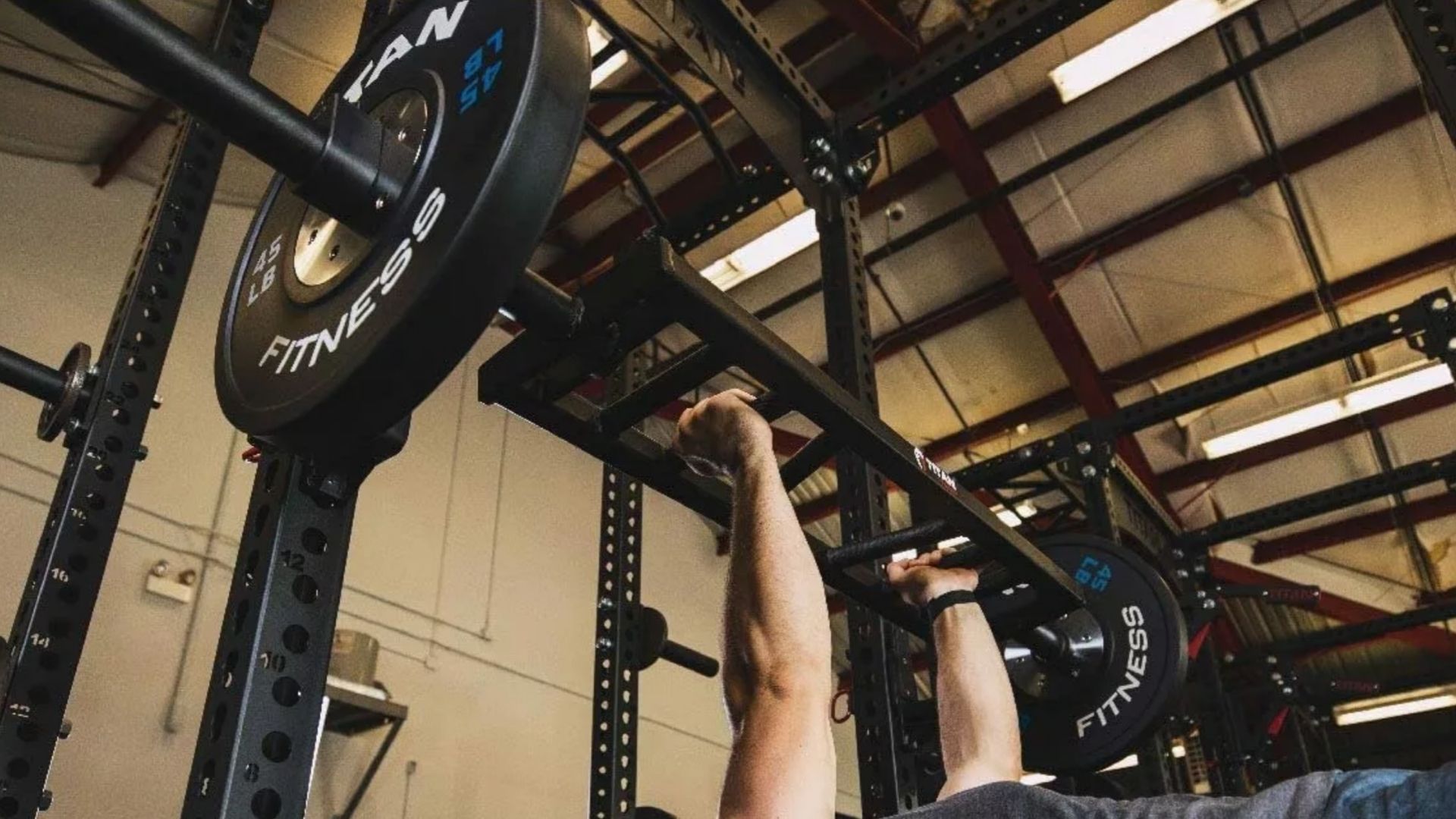
Once the realm of strongmen and circuses, the barbell is now an integral piece of any weight room. The big four — bench press, deadlift, squat, and overhead press — are fundamental lifts that rely upon this simple and overlooked tool. When I say overlooked, I mean that there is no singularly more versatile piece of equipment that you could add to your gym. Bands and dumbbells are great for isolation and adding variety to your workouts, but the Preacher Curl has not been added to the Olympics for a reason. Strength is found under the bar, something I learned when I began weightlifting.
Using a barbell was the one outlet that helped me beat depression. Something about the ritual of blasting rock, chalking up and then exerting all my energy to lift as much weight as I could was invigorating. The most rewarding feeling was the sense of lightheadedness and ringing of the ears after a lift — it meant that you were at your true maximum. Every day that I went to the gym didn’t just make my muscles stronger, it made my mind stronger. In many ways, the barbell is the ultimate piece of gym equipment that works your mind, body, and spirit.
For all of these reasons, you need to choose wisely when investing in a barbell. Here are some of our picks for the best barbells that would make a perfect addition to your home gym.
Best Overall
Rogue Ohio Power Bar
Best Value
Everyday Essentials Olympic Bar
Editor’s Choice
Titan Fitness Multi-Grip Barbell
Best Squat Bar
Sorinex Safety Squat Bar
Best Barbell for Beginners
Valor Fitness 15kg Barbell
Best Multifunctional Barbell
Synergee 20kg Barbell
Best Barbell for Curls
XMark EZ Curl Bar
Best Trap Bar
Everyday Essentials Olympic Hexagon Bar
Best Log Barbell
Rogue LB-1 Log Bar
Why you should trust us
I started lifting weights during my junior year in high school at the suggestion of my coach. I got a late start in sports and he told me weight training would help me catch up. He was right. In the weight room, I quickly became a better football player, wrestler, and it was the secret to how I got my personal best at shot put, discus, and javelin. Then, I learned even more about bodybuilding and muscle development during my time in the Marine Corps.
Then, in 2015, I discovered champion powerlifter Jim Wendler’s 5/3/1 workout program. Following that simple plan, I trained religiously for almost two years and competed in multiple Strongman competitions. While deadlifting a car may sound cool, nowadays, I prefer functional workouts, so I can keep up with my wife and kids. Nonetheless, fitness has been a staple in my life.
Types of barbells
If you’ve only ever been to a box gym then there’s a good chance you’ve only seen a straight barbell, but there are actually many iterations. While you might be able to do the same exercises with bars with different shapes and designs, they’ll challenge your muscles in different ways and give you a more effective workout. In the spirit of simplicity, let’s look at the bar type based on its shape and function.
Straight bars
These are the bars most people typically think of and you’ll see them in any gym. While they are straight, there are subtle differences that determine the use of these bars. Tensile strength and yield strength will vary depending on the material used and the length of the bar. The weight of the bar can vary, as well as the thickness of the grip.
Most commonly, you’ll find powerlifting bars at most gyms. These bars are designed for static lifts and don’t offer much whip, but have high tensile and yield strengths. If you head over to a Crossfit box or specialty gym, you’re more likely to find Olympic bars. These will offer plenty of whip as they were designed for the dynamic sport of Olympic weightlifting, which makes them a good choice for Crossfit.
Shaped bars
Probably the most recognizable shaped bar is the EZ curl bar. Made with several bends in the bar, it allows you to find a comfortable grip while curling but can be great for triceps and other exercises as well. The second most recognizable is the trap bar or hex bar. It was designed for the deadlift offering a center-lined lift that would be easier on the lifter’s back. This design makes it great for getting yoked traps.
A lesser-known shaped bar would be the safety squat bar. This unique design is intentionally easier on the shoulders. The forward grips allow those with limited mobility or shoulder issues to train without the pain of a straight bar.
Niche bars
A niche bar is designed for a specific function. A simple example is the log bar used in Strongman competitions. It looks like it sounds and can be made of metal or wood. The body of the log will have two grips inside of the log and weight-holding sleeves jutting out the side. Axel bars are another example, as they look like a traditional straight bar, but they have a two-inch-thick grip.
The Swiss bar (or multi-grip bar) is one of the more stranger-looking niche bars. The square body and various grips might easily confuse a baby lifter. The different angles of grip offered can help alleviate shoulder pain while training, but also come in handy for adding different stressors to your muscle groups.
Key features of Barbells
Knurling
Knurling refers to the textured grip section on a barbell. Typically, it’s a raised diamond pattern that both helps wick away sweat and quite literally digs into your hand when you grab the bar to give you spidey-like clinging abilities. Some lifters use chalk to avoid getting their skin torn or ripped by the knurling. However, the sharpness of the knurling varies by manufacturer, but in general, you don’t need aggressive knurling.
Sleeve
The sleeve on a barbell is the section where weights are loaded. It’s large in diameter and usually rotates, which makes it easier to handle. However, if your barbell sleeve doesn’t rotate, don’t worry. It doesn’t necessarily mean your bar is broken or defective. The rotating sleeve is important for Olympic-style weightlifting and other dynamic lifts as it allows the weights and bar to rotate separately during the lift.
The majority of bars feature a bushing-style sleeve that allows the sleeve to spin, but the action isn’t the smoothest or fastest. For that, you’ll want bearing-style sleeves. These sleeves use ball bearings and spin much faster and smoother, which makes them ideal for Olympic weightlifting and Crossfit.
Power rings
Most newer lifters have probably wondered what the smooth rings in the middle of the knurling are for. The name will vary depending on the region or gym you go to, but most people just call them power rings. These smooth sections sit approximately 36 inches apart and offer a reference point for lifters to gain their form.
When I was lifting, I would place my thumb on the ring, and that would be my reference point. This consistency allows you to develop proper form and muscle development. If you’re varying your grip every single lift, your body will have a hard time learning how to not hurt itself.
Benefits of barbells
Strength
The main purpose of using a barbell is to develop strength. Regardless of the exercise you choose, using the barbell has a greater strength return than any other piece of gym equipment for most people. The ultimate result relies upon your ability to remain committed and disciplined, no matter what form of exercise you choose. Adding a barbell to your workouts will amplify any results you desire to achieve when lifting.
This is because the barbell allows for customizable loads, which works great for lifting partners with different one-rep maxes. Using a barbell also helps improve symmetry and forces you to use stabilizer muscles not normally used with dumbbells or bands. If you want to get stronger, get a barbell.
Posture
Form while lifting is vital to avoiding injury, but it also promotes good posture. Posture is the way we stand, sit, or even walk, and plays an important role in our overall health and wellness. Poor posture can cause a misalignment in the musculoskeletal structure of your body, which can then cause a myriad of problems. That’s just with your bodyweight — add an extra 200 to 300 pounds and you could face serious injuries.
Keeping your chin up isn’t just a cliche saying, it’s a part of posture and something lifters learn as they focus on form. Going into strength training, I struggled with posture and had some shoulder pain as a result. After several months, I noticed my posture improve and the pain in my shoulders went away.
Confidence
Confidence is a key trait in any successful person, and the lack of confidence has been the downfall of many others. Those of us who have served in the military instinctively understand confidence and the role it plays in life, for good or for bad. This belief in oneself can only be gained through trials. Much like Greek demigods, we must face trials and challenges to develop confidence. Unlike demigods, that doesn’t mean we have to go fight hydras or sirens, but rather we can find confidence under a barbell. Every time you lift a heavier-than-before barbell, you’ll realize how much more you can handle. That is the very essence of confidence.
Pricing considerations for barbells
Budget
Most inexpensive barbells will have a lower yield and tensile strength than more expensive ones. One common way manufacturers lower the cost is by using less material, so you end up getting a shorter barbell. And, another way is it might have a fixed sleeve. Nonetheless, an inexpensive barbell is good for basic lifting like in a garage gym.
Mid-range
Mid-range barbells are typically used by strength trainers, powerlifters, Olympic weightlifters, or serious home gym athletes. They’re typically constructed from quality steel, so they’ll have a larger yield and tensile strength. They’ll also often sport a rotating sleeve and aggressive knurling.
Premium
Expensive barbells are often seen in commercial gyms or competition settings. In addition to quality steel, they might also have customizable features or a cerakote finish, which drives up the price.
How we chose our top picks
In an ideal world, I would have used each of these bars to give you a personal review. However, that is impractical. Instead, I used my industry and personal knowledge. Each bar was selected based on the performance criteria and its purpose. While pricing wasn’t restricted during selection, I did consider price and chose bars without unnecessary features (i.e., cerakote finishes or customized sleeve caps). I picked options I would personally use in my home gym.
FAQs on barbells
You’ve got questions, Task & Purpose has answers.
Q. What does tensile strength mean in barbells?
A: Tensile strength is the amount of pressure the material of the bar can handle before breaking. It’s typically represented in pounds per square inch (PSI) and directly relates to the maximum load the bar is capable of.
Q. Does whip matter in a barbell?
A: Yes, depending on the type of lifting you’re doing. For most weightlifting and strength training, whip is irrelevant and unnecessary. For Olympic weightlifting or stabilizer training, it is important to have as it can reduce the amount of shock on the body during the exercises.
Q. How much does a barbell weigh?
A: The weight of the barbell varies depending on design and material. Traditional straight bars weigh 45 pounds but are offered at 25 and 35 pounds as well for beginners. Trap/hex bars can be heavier, while EZ curl bars will be lighter.
Q. Is tensile strength or yield strength more important?
A: Yield strength is more important unless you can afford to drop several Benjamins every time you work out. Yield strength is the amount of weight the bar can hold before bending and deforming. It’s not recommended to attempt lifts with a deformed bar.
Our gear section
Scott Whisler is a Marine Corps veteran and family man. He’s an avid student of philosophy who strives for self-growth and challenge, both found in his outdoor adventures. As a new Okie, his focus is on exploring the South Central region. His lifetime goal is to have excursions in all of the National Parks.
